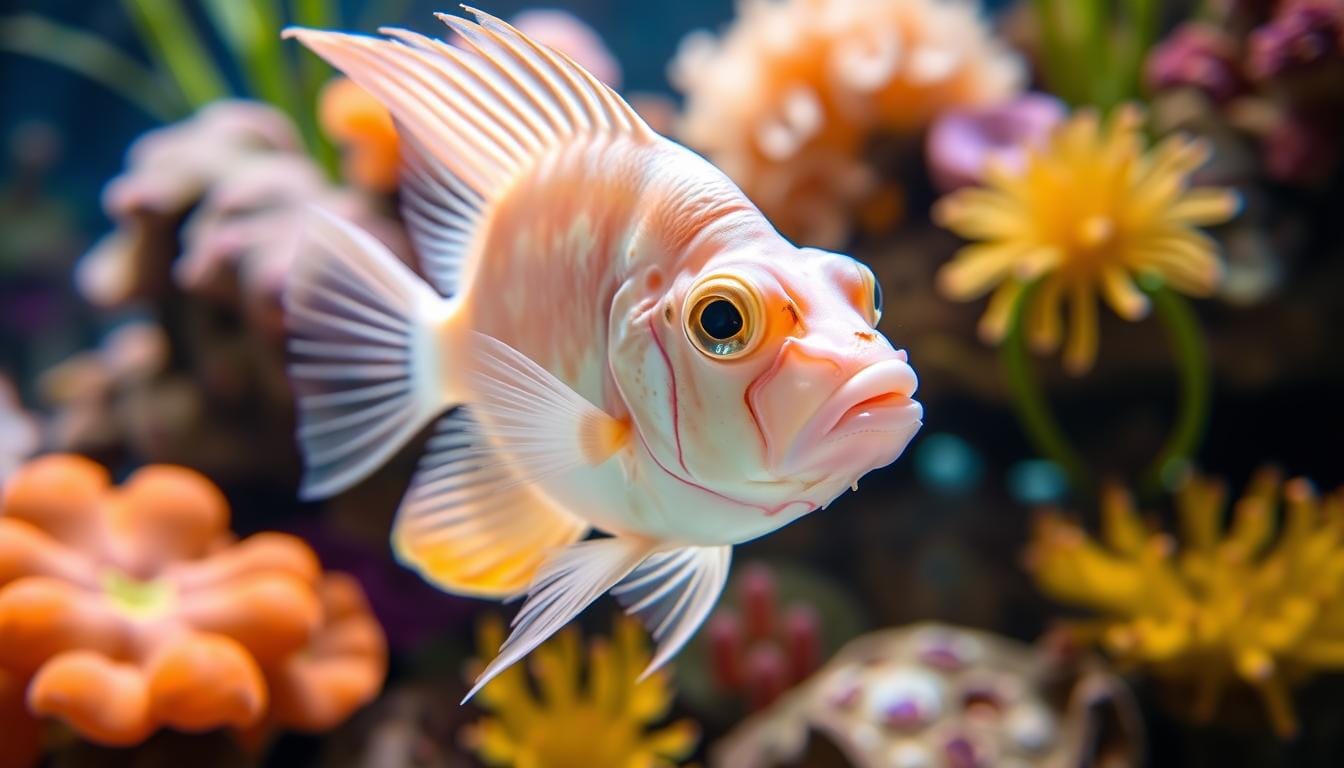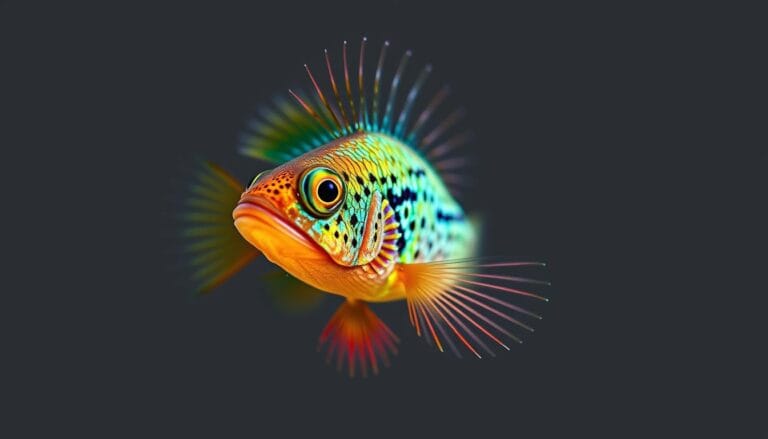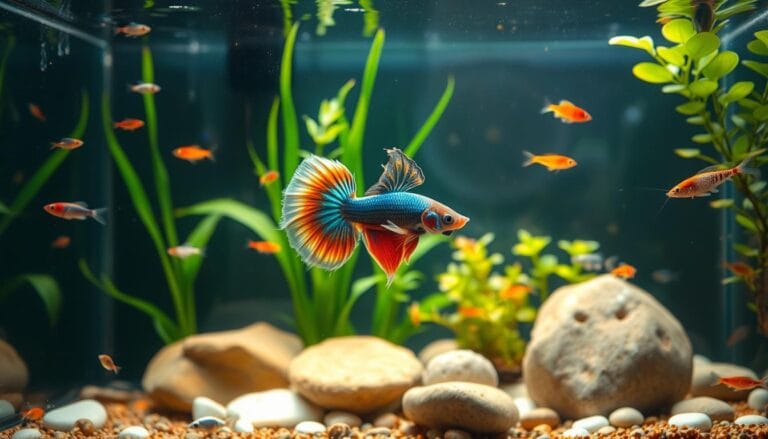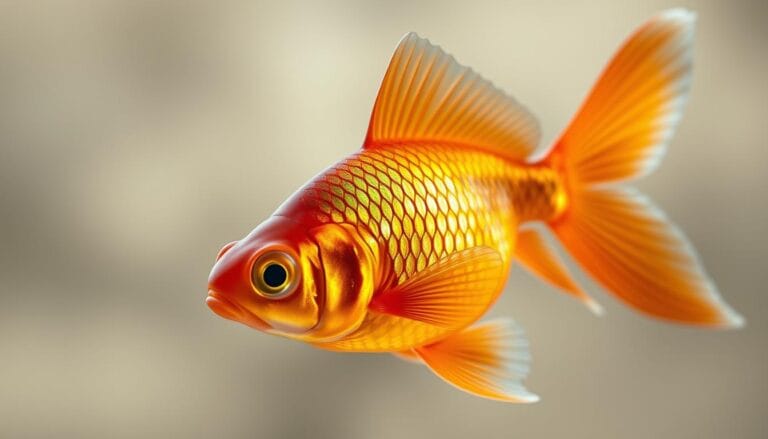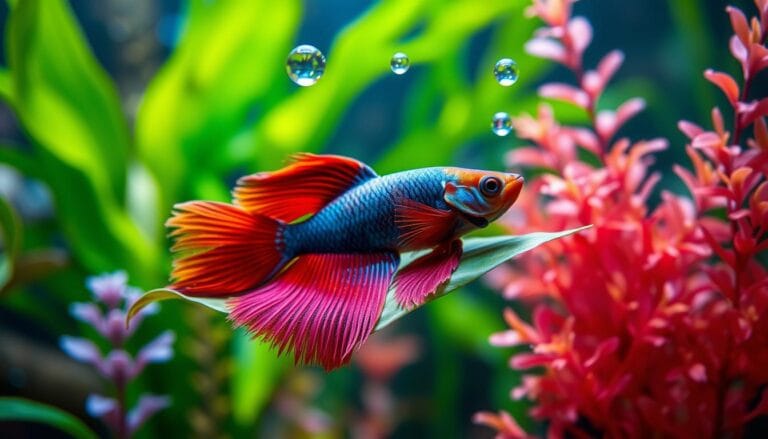Weak Angelfish: How to Spot & Save Your Fish Fast
Did you know angelfish can live up to 12 years in a clean, stress-free environment? Yet, many owners face common issues that can weaken their fish. It’s vital to know the signs of a weak angelfish and act fast to save them. By learning to spot and address problems early, you can protect your investment and ensure your fish’s well-being.
Table of Contents
Spotting a weak angelfish is urgent. You must quickly identify the signs and take action. By understanding and preventing common causes of weakness, you can help your fish live a long, healthy life. With the right care, your weak angelfish can recover, making your investment worthwhile.
Key Takeaways
- Angelfish can live for 8 to 12 years with proper care
- Weak angelfish can be caused by poor tank conditions and stress
- Regular water testing is essential to prevent diseases
- A healthy diet and proper feeding schedule can help prevent weak angelfish
- Understanding the signs of a weak angelfish is critical to saving your fish
- Angelfish investments can be protected by learning how to care for your fish
- Weak angelfish require prompt attention to prevent further complications
Signs of a Weak Angelfish: Early Warning Signals
As an aquarist, it’s key to spot the signs of a weak angelfish. This includes a fish lying on the floor. A platinum angelfish, like others, shows symptoms when stressed or sick. Watching your fish’s behavior and health is vital for early detection.
Common signs of a weak angelfish include labored breathing and lethargy. Visible injuries and a loss of appetite are also warning signs. Erratic swimming, hiding, or lying on the tank’s bottom also indicate a problem.
Physical Symptoms to Watch For
Physical symptoms vary but include rapid breathing and color changes. For example, a pale fish with fast breathing might have parasites. Regularly observing your fish’s behavior and health is important to catch issues early.
Behavioral Changes That Signal Problems
Behavioral changes can also signal issues with your angelfish. These include a loss of appetite, erratic swimming, or hiding. These changes can be due to stress, disease, or poor water quality. Recognizing these changes helps you take action quickly to prevent further problems.
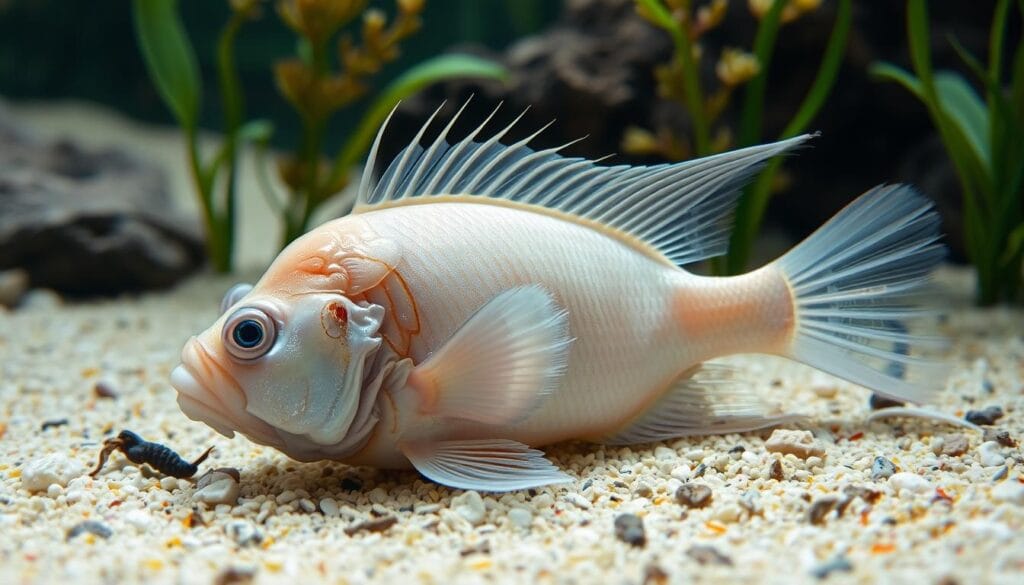
Emergency Warning Signs
In some cases, a weak angelfish may show emergency signs. These include sudden color changes, rapid breathing, or lying on the tank’s bottom. These signs need immediate attention, as they can be life-threatening. Recognizing these signs and acting quickly can help your angelfish recover and avoid further issues.
Common Causes Behind Weak Angelfish Syndrome
Several factors can make your angelfish weak. Overcrowding, poor water quality, and not enough care are common reasons. A weak angelfish on floor of the tank is often a sign of these issues. Knowing the best conditions for your angelfish is key. For example, a 20-gallon tank is usually good for just one angelfish, as they need space to swim.
The size of your aquarium matters for angelfish. Small fish need more space than bigger ones. Knowing this helps prevent overcrowding, which can stress and make your fish sick. Other things like pH, temperature, and how often you change the water also matter.
Some important things to remember for angelfish care are:
- Creating a good environment with the right water
- Feeding them a balanced diet
- Keeping the water clean with regular changes
- Not having too many fish in the tank
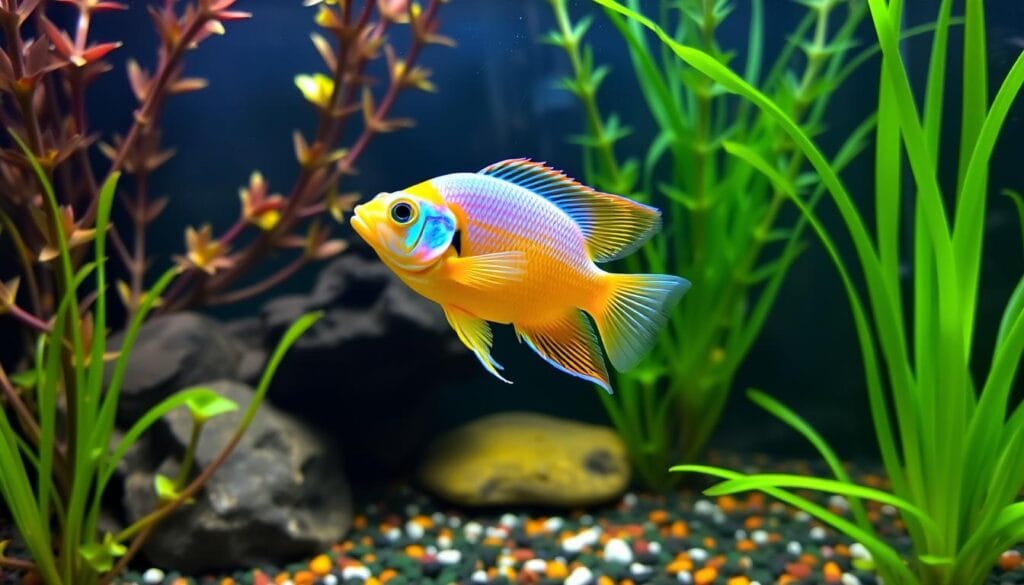
To keep your angelfish healthy, understand the reasons for weakness and prevent them. Knowing how many fish a 20-gallon tank can hold is important. With the right care, your angelfish can be a joy to watch for many years.
Understanding Your Angelfish’s Optimal Environment
Creating a great home for your angelfish is more than just a tank and food. It’s key to know what your fish needs to stay healthy. A weak angelfish often means the environment is not right.
First, make sure your tank has the right water. It should be slightly acidic, with a pH of 6.5 to 7.5. The water hardness should be between 5 to 12 dH. And, the temperature should be between 75°F to 84°F.
Water Parameter Requirements
Here are some important water parameters to remember:
- pH level: 6.5 to 7.5
- Water hardness: 5 to 12 dH
- Temperature: 75°F to 84°F
Tank Size and Space Needs
A 20-gallon tank is the minimum for one angelfish. Add 10 gallons for each more fish. This gives your fish enough room to live well and avoid being too crowded.
By understanding and meeting your angelfish’s needs, you can keep them healthy. This way, your investments in angelfish will be worth it.
Nutrition and Feeding Guidelines for Strengthening Your Angelfish
When your angelfish is weak and lying on the tank floor, focus on the right nutrition. A balanced diet with various high-quality foods is key. Include commercial flakes, pellets, and live or frozen foods to ensure your fish gets all nutrients.
A weak angelfish may show signs of malnutrition. So, it’s important to check your feeding schedule. Feed your angelfish twice a day, with amounts they can eat in minutes. This helps prevent overeating and waste. Also, add healthy supplements like frozen foods once or twice a week for recovery.
Essential Nutrients for Recovery
Protein, vitamins, and minerals are vital for angelfish recovery. You can get these from brine shrimp, bloodworms, and vegetable-based foods. Make sure your angelfish has plenty of clean, fresh water for digestion and health.
Feeding Schedule Recommendations
Here’s a feeding schedule to follow:
- Feed your angelfish twice a day, with amounts consumable within a few minutes
- Incorporate healthy feeding supplements, such as frozen foods, once or twice a week
- Provide a variety of high-quality foods, including commercial flakes, pellets, and live or frozen foods
By following these guidelines and providing the right nutrition, you can help your weak angelfish on the floor recover and thrive in its tank.
Emergency Care Procedures for Weak Angelfish
When your platinum angelfish looks very sick or stressed, you need a quick plan. This plan should include setting up a quarantine tank and giving the right medicine. It’s also key to watch your fish closely. For platinum angelfish, which are more delicate, you must act fast.
Identifying the disease and treating it right is vital. Platinum angelfish can get sick with ich, dropsy, or bacterial infections. Here are some important steps for treating your platinum angelfish:
- Quarantine the sick fish to stop the disease from spreading
- Give the medicine as told by a vet or aquarium expert
- Keep the water clean and at the right temperature
- Watch your fish’s health closely and change the treatment if needed
By following these steps and giving the right care, you can help your platinum angelfish get better. They can then live happily in their tank.
Treatment Options and Medication Guidelines
When your weak angelfish gets sick, picking the right treatment is key. You have many choices, like over-the-counter meds, prescribed drugs, and natural remedies. Knowing the good and bad of each can help you choose the best for your fish.
For diseases like Ich, Fin Rot, and Velvet Disease, following medication guidelines is important. For instance, raising the water to 86°F (30°C) can fight Ich. Also, changing half the water daily can help with Fin Rot by improving water quality. For Hexamita, Metronidazole is the go-to treatment.
Over-the-Counter Solutions
Some over-the-counter meds, like Disease Dip and Broad spectrum Antibiotic, work well for some diseases. But, it’s vital to follow the directions and watch how your fish reacts to the treatment.
Prescribed Medications
Prescribed meds, like Metronidazole and Praziquantel, are often more effective for specific diseases. It’s important to talk to a vet or an experienced aquarist to find the right treatment for your weak angelfish.
Natural Remedies
Natural treatments, like raising the water temperature and doing partial water changes, can also help. For example, heating the water to 95° F for 7-10 days can treat flagellate infections in weak angelfish.
Acting fast is key to successful treatment. It’s important to watch how your fish responds and adjust the treatment as needed. By understanding the different treatment options and guidelines, you can help your weak angelfish get better and stay healthy.
Tank Maintenance Strategies to Prevent Weakness
Keeping your tank clean is key to stop diseases and stress in angelfish. A good filter and regular water changes help a lot. These steps are important for your fish’s health and prevent weakness.
Changing some water weekly is a must to keep it clean. Also, make sure your filter fits your tank’s size and fish load. A good filter keeps the water clean and full of oxygen.
- Regular water changes to reduce dissolved organics and bacterial loads
- A high-quality filtration system to maintain clean, oxygenated water
- Monitoring of water parameters to prevent fluctuations that can lead to stress and health issues
By following these steps, you can keep your angelfish strong and healthy. Remember, taking care of your tank is a big part of caring for your fish.
Compatible Tank Mates for Recovering Angelfish
When you’re adding tank mates to a recovering angelfish, pick species that get along. It’s important to know what angelfish need socially and choose mates that fit in. The number of fish in your tank, like how many angelfish can a 20 gallon hold, is key to keeping peace.
A 20-gallon tank is a good size for a small group of angelfish. But remember, these fish can grow up to 6-8 inches tall. They need lots of room to swim. A 20-gallon tank can hold 1-2 angelfish comfortably. But, if you’re adding other fish, think about their space needs too.
Some good tank mates for recovering angelfish are:
- Neon tetras
- Harlequin rasboras
- Corydoras catfish
These fish are usually calm and won’t fight with your angelfish for food or space. Always check the needs of any new fish before adding them to your tank.
Choosing the right tank mates and keeping your tank clean and spacious helps your angelfish recover. Always watch your fish closely and adjust as needed to keep everyone healthy and happy.
Long-Term Health Monitoring Tips
Caring for your angelfish means regular checks and upkeep. This is vital for weak angelfish or sensitive types like platinum angelfish. Watching your fish closely helps spot problems early.
A weak angelfish on the floor might signal poor water quality or bad diet. Platinum angelfish need specific water conditions to do well. Daily health checks and a monthly maintenance plan are key to keeping your fish healthy.
Daily Health Checks
Every day, look for signs of illness or stress in your fish. Check for labored breathing, lethargy, or changes in eating habits. Also, make sure the water’s temperature, pH, and ammonia levels are right for your angelfish.
Monthly Maintenance Schedule
Monthly, clean the gravel, replace filter media, and do partial water changes. This keeps the tank clean and healthy. It prevents toxins that can harm your fish. Following these steps helps your fish live a long, happy life.
Regular checks and upkeep are essential for your angelfish’s health. By being proactive, you can enjoy these beautiful creatures for many years.
Conclusion: Ensuring Your Angelfish’s Return to Health
Getting your weak angelfish back to health takes time, effort, and the right steps. By following the advice in this article, you can help your fish recover. Every action you take, from spotting early signs to improving their environment and feeding them right, helps.
Your angelfish investments in time and care are more than just about their health. They add joy and satisfaction to your hobby. With the right knowledge and care, you’ll see your angelfish become vibrant, active, and full of life. This brings pride and fulfillment to your aquarium hobby.
FAQ
What are the physical symptoms to watch for in a weak angelfish?
Look out for labored breathing, lethargy, and visible injuries in a weak angelfish.
What behavioral changes can signal problems in an angelfish?
Watch for loss of appetite, erratic swimming, and hiding as signs of trouble.
What are the emergency warning signs for a weak angelfish?
Emergency signs include sudden color changes, rapid breathing, and lying at the tank bottom.
How many angelfish can be kept in a 20-gallon tank?
It’s important to know how many angelfish fit in a tank to avoid overcrowding. This can cause stress and disease.
What are the ideal water parameter requirements for angelfish?
Keeping the right water parameters, like temperature, is key for your angelfish’s health.
What are the essential nutrients angelfish need for recovery?
A balanced diet with the right nutrients is vital for a weak angelfish’s recovery.
What are the emergency care procedures for a weak angelfish?
In emergencies, setting up a quarantine tank and using the right medication can save a fish’s life.
What are the treatment options for a weak angelfish?
There are many treatments, including over-the-counter options, prescribed meds, and natural remedies, each with its own benefits and risks.
How can I prevent weakness in my angelfish?
Regular water changes, a good filtration system, and a compatible tank environment can help prevent weakness.
What should I consider when introducing tank mates to a recovering angelfish?
Choose tank mates that are compatible with angelfish to ensure a peaceful recovery environment.
How do I monitor the long-term health of my angelfish?
Regularly check for illness signs and follow a monthly maintenance schedule to keep your angelfish healthy.
There are no reviews yet. Be the first one to write one.

